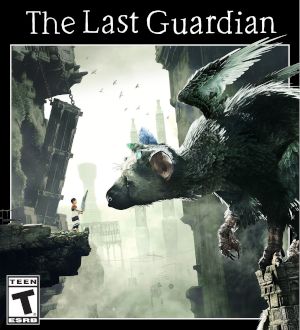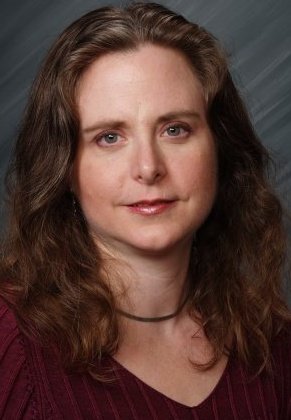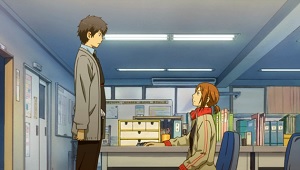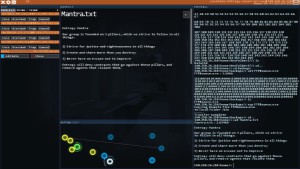Amelia fingered an unruly hair into place, willing her locks to stay safely tucked under her scarf. She prayed the stylists cleansed the utensils between appointments. Last thing she wanted was to pick up another tangle. Although, Dye for a Change was the highest rated Psychosomatic Hair Syndrome recovery shop on Karma-Yelp.
The bell clinked against the metal door like wind chimes. Burnt hair mixed with the distinct chemical scents of nail polish, astringent, and hair spray assaulted her as she entered.
“Be right with you!” Someone poked out from behind the screens, where silhouettes of women getting shampooed and styled played out like a silent movie, complete with music. Sweeney Todd. Cute. “Make sure to sign in!”
Amelia inched toward the sign in sheet, patting her scarf again to assure it hadn’t slipped, even though nobody sat in the waiting area. Her Milano knockoffs squeaked and groaned on the polished marble, as if the tile didn’t approve of her cheap shoes.
You think you’ll fool people? Amelia pushed the doubt aside. It was hard to tell what thoughts were her own.
As soon as she dotted her ‘i’, a short girl with spiked black hair, stud in her lip, a sleeve tattoo of a rose with a thorny stem, and nose ring sprang from the back room. “I can take you.” She motioned Amelia around the screens. Amelia avoided eye contact with the other patrons, dodging into a private corner where the girl flung a smock around Amelia’s neck. The stylist skimmed her fingers under the hem of the scarf, “May I take a look?”
Amelia swallowed a breath. “Can we discuss options, pricing?”
“Let’s take a look first.”
The stylist slid the scarf off in one quick motion. Amelia gasped.
“Oh my. Awful tangle.” The stylist inspected the mess. “A big one.” She picked at the base of the knot. “Looks like it started years ago and it’s been festering since.” She shook her head, her lips thinned to a line. She attempted an exploratory stroke of her comb. It snapped, the plastic needles ping-a-linged on the floor. “Wow, not good. We can untangle it in three, maybe four sessions. Or. . .”
“I’m willing to try anything. I’m desperate.”
A voice whispered—don’t waste our money—but it wasn’t Amelia, it was him.
The stylist fumbled in her apron for a brochure. “This package here.” She opened it, pointing to a cut and style.
Mid-priced. Two-hour session. It would be over, the whole affair, in two hours. Seemed fair to have two years of her life removed in two pampering hours.
“It sounds wonderful.” Amelia wanted it done. No, needed it done. Over. Fin. The end.
The stylist bit the stud on her lip. “We don’t usually take walk-ins for such extensive work, but I had a cancelation.”
Amelia sunk into her chair. “Wonderful. Get it out. I just want him out for good.”
“Bad breakup?”
“We were best friends. . .” Amelia squeezed her eyes shut. “I don’t want to talk about him.”
The stylist hummed along to the music, working through the tangle, cutting the sections that didn’t cooperate. “This could have been prevented. We’ll get you on a schedule. This section here–” She dangled the offending knot from her clippers. “-only manifested a month ago, right at the scalp. That’s how we know. Whoever caused this mess, it’s a good thing he’s gone.”
Amelia clutched the armrest. “I’m not paying you to critique my life. I just want you to fix it.”
Always blaming others for your problems.
“I shouldn’t have…that wasn’t me.”
The stylist tsked, making little cooing sounds as she massaged the scalp. “Don’t worry, these tangles grab a hold and it affects you. Deep. You’ll be yourself again. I promise.”
Amelia squeezed her eyes shut. She should apologize, say something more, rather than let all the blame fall on the tangle, but her throat tightened like she’d swallowed a wad of rubber bands. When he whispered into her thoughts it seized her confidence, her spirit, her identity. Amelia tucked the toxic bile in, as if it were another tangle.
The stylist moved silently, measuring strands against each other. She fluffed, buzzed, clipped. Amelia’s butt numbed while waiting in the chair. Her back ached and she’d memorized every pock in the ceiling tiles. Then the stylist whirled the chair around and flashed a hand-held mirror. “What do you think?”
Amelia’s hair curved around her face, teasing the top of her shoulders. The ends flipped out. Layers hid the worst of the damage, but Amelia could still see evidence of its hold, of his hold. She could still hear his voice in her head. No college. You’ll waste our money on a useless degree. I’ll take care of you. I’ve always taken care of you. Or: You can’t wear that. It will look like you slept your way into management.
She turned her head from side to side, noting the lack of weight from the knots and tangles. But the weight in her mind lingered.
The stylist lowered the mirror, her expression grim. “You don’t like it.”
“I’ll get used to it,” Amelia stared into the mirror mustering up some emotion, but nothing came.
The stylist pressed her lips together and arched an eyebrow. “Or you can curl up and dye.”
Amelia blinked. “Excuse me?”
The stylist wielded her curling iron as if it were a sword and shook the box of dye. “I recommend red. Extreme change. It’s the best way to strip your hair’s reaction to the trauma.”
The stylist went to work curling, painting, and origami folding small sections of hair into tin strips. Another hour and this time Amelia plastered on her best faux smile, gushing over the change. She paid, politely refused future appointments, and marched out her car on stilt-like legs.
At home she stared at the mirror for hours. The tangles were gone, but the voices remained.
You don’t need friends.
It should be just us.
Nobody else will love you.
He grew up next door. She’d known him her whole life, though they’d dated for only two years. There was only one option left.
Amelia needed to start over.
She plugged in the electric razor. Buzzed a clean swipe straight down the center. It wasn’t until the lock of hair dropped to the floor that her heart lurched in her chest. Oh fuck. What had she done? Her hands shook. The razor almost slipped from her fingers.
You’re an idiot. How will they know you’re a woman? Nobody will love–
Amelia cut the next section before the toxic thought could finish. Then the next and next. Quickly now, not thinking about what she was doing. How long it would take to regrow from this point. Even when she finished her fingers searched for an errant hair. She had it all. The knots and tangles lay flat on her bathroom floor. She kicked at them and they limply flopped from her toe.
She closed her eyes.
Waited.
A flood of relief at the silence.
The scarves were itchy anyway.
© 2017 by Tina Gower
Author’s Note: The story came from a comment while talking with a friend. She had recently gotten her hair cut and while we all gathered around and admired the new style we got into a short discussion about how long it takes hair to grow. I made a comment about where in her hair I got to know her. She thought that was funny and we tried to figure what part of her life she’d “cut” from her hair. Later I was thinking about how that might be an interesting concept and the rest of the story untangled from there.
 Tina Gower grew up in a small community in Northern California that proudly boasts of having more cows than people. She raised guide dogs for the blind, is dyslexic, and can shoot a gun and miraculously never hit the target (which at some point becomes a statistical improbability). Tina also won the Writers of the Future, and the Daphne du Maurier Award for Mystery/Suspense (paranormal category), and was a finalist for the Romance Writers of America Golden Heart ® (writing as Alice Faris). She has professionally published several short stories in a variety of magazines. Tina is represented by Rebecca Strauss at DeFiore and Company. Connect with her at www.smashedpicketfences.com
Tina Gower grew up in a small community in Northern California that proudly boasts of having more cows than people. She raised guide dogs for the blind, is dyslexic, and can shoot a gun and miraculously never hit the target (which at some point becomes a statistical improbability). Tina also won the Writers of the Future, and the Daphne du Maurier Award for Mystery/Suspense (paranormal category), and was a finalist for the Romance Writers of America Golden Heart ® (writing as Alice Faris). She has professionally published several short stories in a variety of magazines. Tina is represented by Rebecca Strauss at DeFiore and Company. Connect with her at www.smashedpicketfences.com
If you enjoyed the story you might also want to visit our Support Page, or read the other story offerings.

 The Last Guardian is a gorgeously detailed, thoughtful action-adventure fantasy game. You play a young boy who awakens in a cavern with a large mythical creature who is chained to the floor. As the story progresses, you form a bond with the creature, Trico, as the two of you navigate through environmental puzzles set in enormous, elaborate environments, some of ancient ruins, some of dizzying heights. Sometimes you need Trico’s help to survive or progress through a series of puzzles, and sometimes Trico needs yours.
The Last Guardian is a gorgeously detailed, thoughtful action-adventure fantasy game. You play a young boy who awakens in a cavern with a large mythical creature who is chained to the floor. As the story progresses, you form a bond with the creature, Trico, as the two of you navigate through environmental puzzles set in enormous, elaborate environments, some of ancient ruins, some of dizzying heights. Sometimes you need Trico’s help to survive or progress through a series of puzzles, and sometimes Trico needs yours.


 Joyland is a mystery novel written by Stephen King and published in 2013 by Hard Case Crime.
Joyland is a mystery novel written by Stephen King and published in 2013 by Hard Case Crime.
 Aftermath is a Star Wars franchise tie-in novel written by Chuck Wendig and published in September 2015 by Del Rey. Since Disney decided to declare all of the pre-2014 novelizations as a separate timeline from The Force Awakens movie in 2015, Aftermath is one of the few novels in the official movie canon.
Aftermath is a Star Wars franchise tie-in novel written by Chuck Wendig and published in September 2015 by Del Rey. Since Disney decided to declare all of the pre-2014 novelizations as a separate timeline from The Force Awakens movie in 2015, Aftermath is one of the few novels in the official movie canon.

 >I need your help
>I need your help